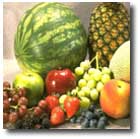News and Insights for
your best life. Online since 1998
- Home Health
- Breaking news
- In caso di...
- Per saperne di
più... - Medicina occidentale
- Medicine complementari
- Medicina cinese
e agopuntura - Omeopatia
- Fitoterapia

Researchers conducted a meta-analysis to summarize evidence from prospective cohort studies about the association of fruits and vegetables consumption with the risk of stroke.

Pertinent studies were identified by a search of Embase and PubMed databases to January 2014. Study-specific relative risks with 95% confidence intervals were pooled using a random-effects model.
Dose–response relationship was assessed by restricted cubic spline.
Twenty prospective cohort studies were included, involving 16,981 stroke events among 760,629 participants.
The multivariable relative risk (95% confidence intervals) of stroke for the highest versus lowest category of total fruits and vegetables consumption was 0.79 (0.75–0.84), and the effect was 0.77 (0.71–0.84) for fruits consumption and 0.86 (0.79–0.93) for vegetables consumption.
Subgroup and meta-regression showed that the inverse association of total fruits and vegetables consumption with the risk of stroke was consistent in subgroup analysis.
Citrus fruits, apples/pears, and leafy vegetables might contribute to the protection. The linear dose–response relationship showed that the risk of stroke decreased by 32% (0.68 [0.56–0.82]) and 11% (0.89 [0.81–0.98]) for every 200 g per day increment in fruits consumption (P for onlinearity=0.77) and vegetables consumption (P for nonlinearity=0.62), respectively.
Fruits and vegetables consumption are inversely associated with the risk of stroke.
For more information
Stroke, 2014
Fruits and Vegetables Consumption and Risk of Stroke
A Meta-Analysis of Prospective Cohort Studies
MDN
del Dott. Turetta
Quali sono i problemi o le disfunzioni che possono giovarsi di un intervento omeopatico d'urgenza e, di conseguenza, come dovrebbe essere un ideale armadietto medicinale omeopatico casalingo.- Home -
- Health -
- Depressione -
- Sexuality
- Environment -
- Food -
- Musica -
- Capirsi -
- Grafologia -
- Ridere
Copyright © 1998/2018 www.mybestlife.com tutti i diritti sono riservati eccetto quelli già di altri proprietari.
.In caso di
Pubblicità
Per saperne di più su
Pubblicità
Pubblicità
Pubblicità
Pubblicità


